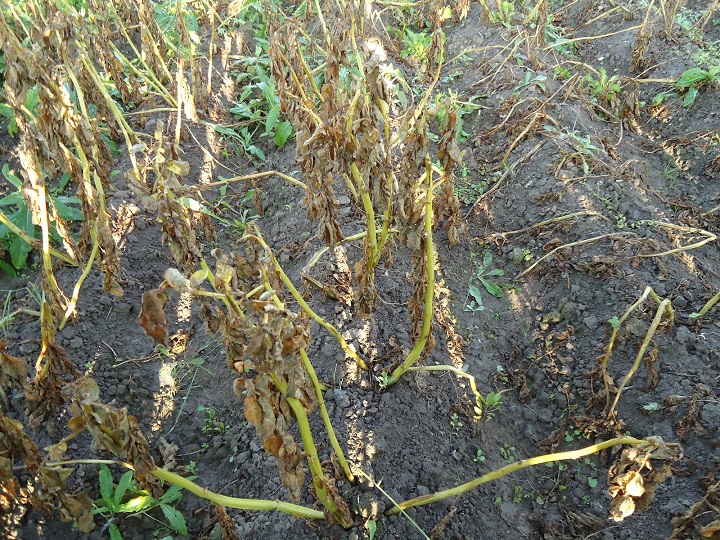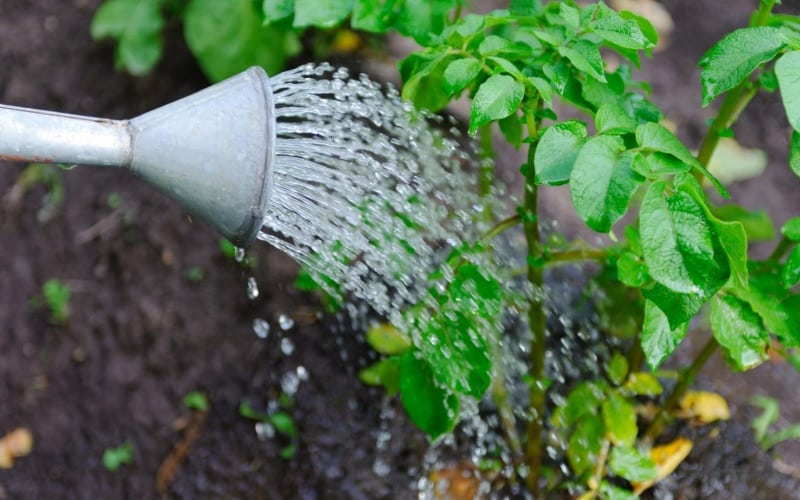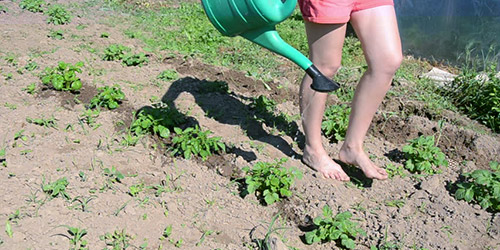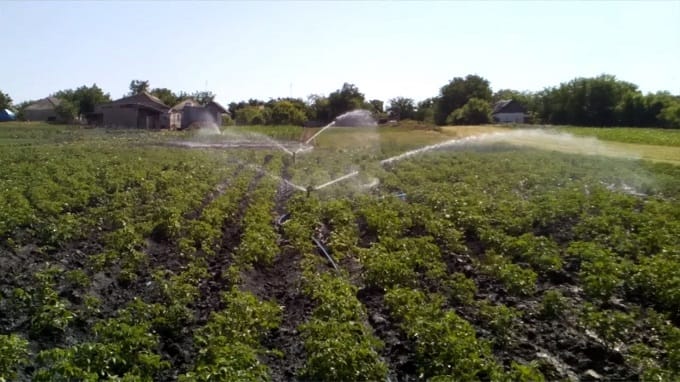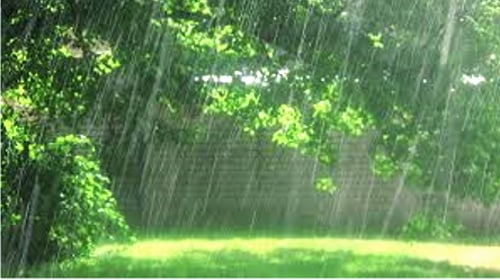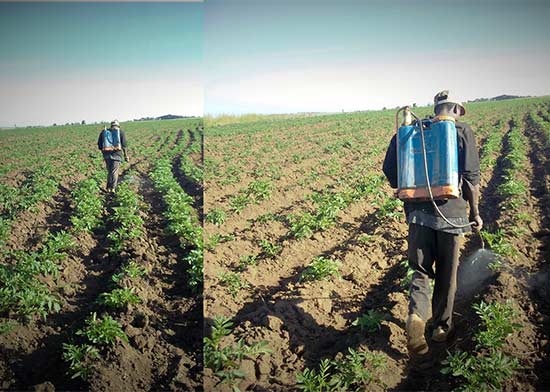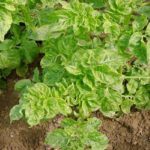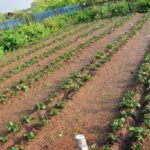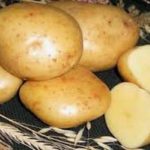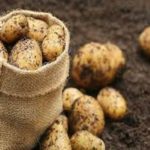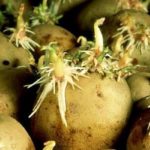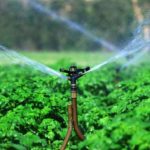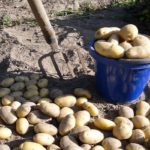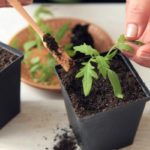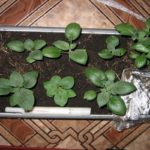Planting potatoes in the ground is half the battle; then you need to properly care for them. What are the timings for watering potatoes, how to do it correctly, what methods to use - these are the questions every novice vegetable grower asks. There is a dilemma between summer residents; some argue that the crop does not need to be watered, while others prefer to moisten the plantings. Everyone decides what to do individually, and experts advise watering the potato beds.
Do I need to water
It is necessary to water potatoes. Plants take moisture from the soil as they develop.In the absence of natural precipitation, you need to water the crop yourself.
In addition to green mass, potatoes form tubers. The peculiarities of their cultivation require timely watering. It must be carried out not only on time, but also in a certain volume. Root vegetables should not be overwatered, but they should not dry out either.
If the necessary conditions are created, the crop will produce the stated yield.
Signs of excess and lack of moisture
To properly grow tubers, you need to carefully monitor their condition. It is not difficult to determine excess or lack of moisture by appearance. Watering potatoes is carried out after carefully examining the appearance of the plants.
If the plant does not have enough water:
- the leaves on the bushes droop and begin to turn yellow;
- the stems do not grow, the buds do not open;
- the smallest stems dry out.
Lack or excess of moisture during the budding period leads to a loss of 20% of the harvest.
When plants have excess water:
- the leaves droop, but their color is rich, dark and the structure is watery;
- wet spots form on the lower part of the stem, covered with a white or gray coating;
- The tubers begin to rot.
At low humidity, potatoes do not respond well to fertilizing, as they do not reach their target.
You should strictly monitor the appearance of plants in order to identify deviations in time. Receiving 4 liters of moisture, the plant grows and develops normally.
What is the best way to water, all the ways
The variety of methods for irrigating potatoes requires summer residents to choose the appropriate method. Everyone chooses the one that is most convenient for themselves and applies it on their site. For the root system, which develops during the entire growing season, a constant but measured application of moisture is necessary. In this case, the roots of the plant should receive no more than 4 liters of water.Methods are divided into 2 types: manual and mechanized.
Watering by hand
For watering potatoes in open ground, this method is used if the plantings are small. Manual watering is carried out using hoses, watering cans, buckets and other available means. The summer resident will accurately calculate the norm, provided that all means except a hose are used for watering.
The advantages of this method are that water is poured directly under the roots. Thus, you will pour more accurately than with the mechanical method. And there is no need to fill the entire area. Water approximately 1 liter per approach. Then repeat and adjust to the required amount.
If you use an irrigation hose, it is better to have a nozzle or a sprayer. It does not erode the soil at the roots. It is better to water one area, then move to the second, then return to the first again.
The disadvantage of the hose watering method is that it is impossible to determine the exact amount of water consumption per plant.
Not all summer residents have the opportunity to use this method, since it is difficult to carry buckets and watering cans. For convenience, a second type of irrigation methods has been created.
Mechanized irrigation
It is carried out with ice-cold water or heated in the sun from special containers using sprinklers.
They are divided into 2 types:
- drip;
- sprinklers.
Each has its own advantages and disadvantages. The disadvantages of both mechanical irrigation structures are the high cost of installation and acquisition of equipment. What irrigation methods the summer resident will use is up to him to decide. Drip irrigation delivers water directly to the roots of plants, while the moisture does not evaporate and does not compact the soil. This is its advantage over sprinkler irrigation systems.
If irrigation using sprinklers is used, then it is necessary to select the correct droplet size.
Large drops strongly compact the soil, which is categorically unacceptable for planting with potatoes, and very small drops settle on the leaves and simply evaporate on them. Summer residents praise the benefits of drip irrigation. Another advantage is that you can water it at any time. Drops do not fall on plants and do not cause burns.
"Dry watering"
If the weather is rainy, then potato plantings require loosening rather than irrigation. In other words - dry watering. This method will help not only retain moisture for plants, but also provide oxygen access to the root system. Potatoes do not tolerate dense soil.
Mulching with various available materials - mowed green manure, sawdust or weeds - will help preserve moisture.
Watering rules
Watering potatoes must be done correctly. To do this, it is necessary to comply with the requirements and rules, thanks to which the declared yield indicators are achieved.
- It is recommended to use warm water heated in the sun. Cold water reduces yield.
- Watering using mechanical irrigation using rain sprinklers is carried out in the evening after sunset. This is necessary in order to avoid sunburn on the leaves.
- The volume of water is from 3 liters per plant and above. For proper irrigation, the watering rate depends on the composition of the soil, climate and precipitation.
- The crop requires more moisture during the budding period. For 1 plant, the water consumption rate is 5-6 liters.
- The first watering is carried out when the sprouts reach a size of 10 cm from the ground. Irrigation is not recommended for the reason that the mother tuber will begin to rot and will not sprout.
- Early potato varieties are watered less than late ones.
To retain more moisture in the soil, loosen the soil after watering..
When to water
The timing of watering potatoes depends on related factors. Therefore, it is difficult to answer this question in general. There is no need to rush with the first watering. Until sprouts appear and reach a size of 10-15 cm, you should not irrigate the soil at all. The norm is 3 liters of water per plant, provided the weather is not dry. Approximate time: 2 weeks after pipping.
As the plants grow, water generously. If the summer is rainy, then 3-4 liters per bush. Otherwise, 6-12 liters. In case of severe drought, water 2 times a week.
If the summer is cool, then water once every 10 days. Potatoes require special attention when they bloom. Then the number of irrigations and the volume of water are increased several times. The signal to start watering is the appearance of the first flower. At this time, the crop begins to form tubers. Plantings continue to be irrigated abundantly throughout the entire period until the buds begin to fall off.
Proper watering of potatoes is the key to half the success. A summer resident seeking to get the maximum possible from planting a crop must comply with the rules, norms and timing of irrigation, while not forgetting about standard agrotechnical cultivation methods.

